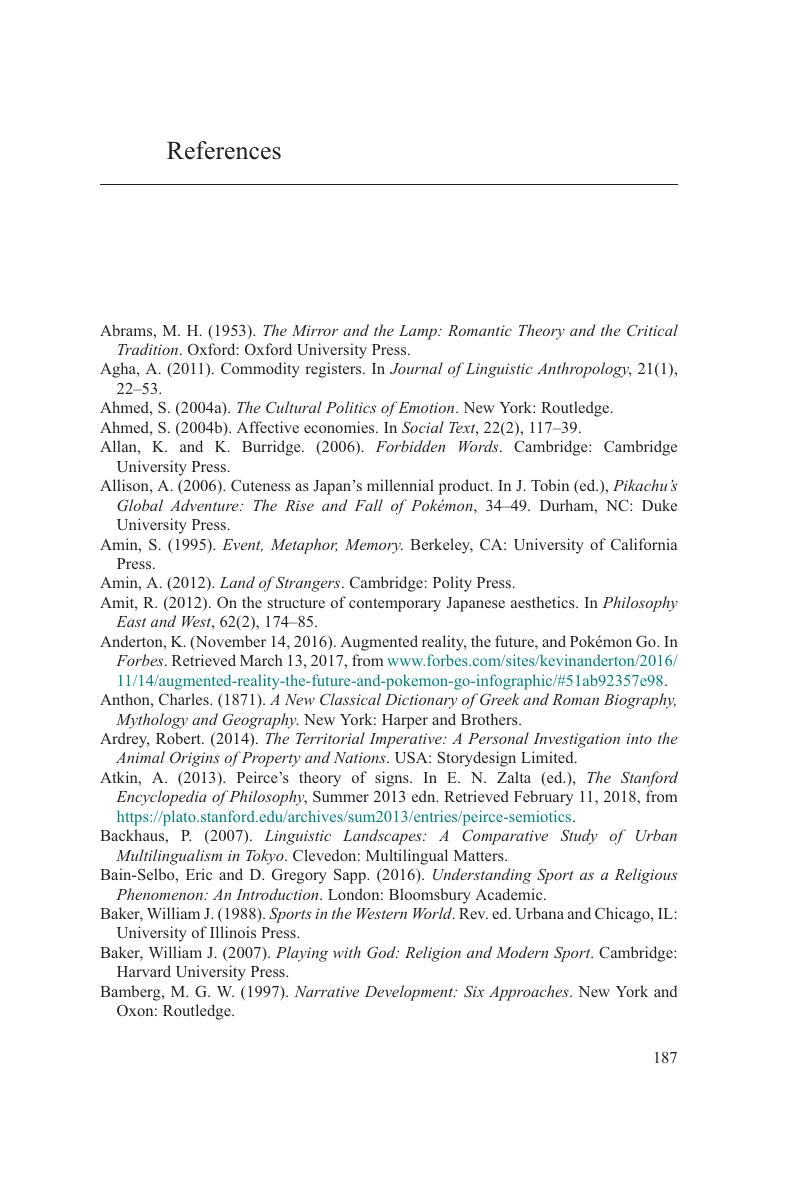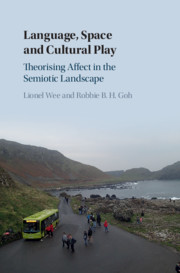Book contents
- Language, Space, and Cultural Play
- Language, Space, and Cultural Play
- Copyright page
- Contents
- Figures
- Acknowledgments
- 1 Introduction
- 2 Theorizing Affect in the Semiotic Landscape
- 3 Kawaii in the Semiotic Landscape
- 4 Reverencing the Landscape
- 5 Romancing the Landscape
- 6 “Friendly Places”
- 7 The Affective Regime of Luxury and Exclusivity
- 8 Affecting the Digital Landscape
- 9 Conclusion
- References
- Index
- References
References
Published online by Cambridge University Press: 30 October 2019
- Language, Space, and Cultural Play
- Language, Space, and Cultural Play
- Copyright page
- Contents
- Figures
- Acknowledgments
- 1 Introduction
- 2 Theorizing Affect in the Semiotic Landscape
- 3 Kawaii in the Semiotic Landscape
- 4 Reverencing the Landscape
- 5 Romancing the Landscape
- 6 “Friendly Places”
- 7 The Affective Regime of Luxury and Exclusivity
- 8 Affecting the Digital Landscape
- 9 Conclusion
- References
- Index
- References
Summary

- Type
- Chapter
- Information
- Language, Space and Cultural PlayTheorising Affect in the Semiotic Landscape, pp. 187 - 204Publisher: Cambridge University PressPrint publication year: 2019



